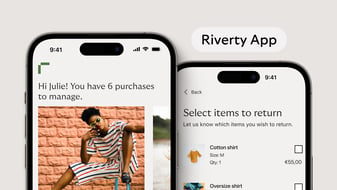How do you teach your child how to deal with money?
How parents deal with money affects how children deal with it later on. It is therefore very important to lead by example. Teaching your child how to consciously deal with money at a young age has positive consequences. We provide you with basic techniques to tackle this in the best possible way.

Introduce your child to money
Financial education is often underestimated. This is very unfortunate, because in practice we see that children who learn to deal with money at a young age will have fewer financial problems later on. But when do you start this financial education? Basically, this already starts under the age of 6 years. For example, when you go shopping together and show that you are paying for a purchase. Or even better if you let your child pay for once. This way, you show that you have to pay for things in the shop.
You can also turn it into a game element by asking your child from time to time whether a particular product is cheaper or more expensive than another product. This will show you what different products are worth and make thinking about money fun.
The first pocket money
A milestone in your child’s financial education is giving them the first pocket money. Pocket money is the perfect way to get your child to use a budget. Give the pocket money at a fixed time and clearly explain how long they have to do with this amount. Make clear agreements on what the pocket money can and cannot be spent on. A great age to start with pocket money is 6 years.
Saving for something beautiful
From the age of 8 you can introduce your child to saving. At this age, they realise that some things are too expensive to buy directly with pocket money.
To start saving, for example, you could suggest saving half of the pocket money and spending the other half. You put the savings in a savings account. This will teach your child how to work towards buying something they would like to buy. In the meantime, clearly explain how long it will take before the desired amount is in the account. You can do this by using a savings chart that you can colour together with your child. You’ll find lots of great savings metres online that you can download and print out.
Saving for a setback
It’s also good to explain that savings are not just for spending. Having something in reserve is very important, even at this age. This way, you make sure your child realises that something can happen at any time and it’s nice to have money in reserve.
Your own payment account
When your child is 10 years old, you can give them more financial responsibilities. For example, open a payment account that teaches them how to withdraw money safely. Show step by step how the balance can be checked and regularly review all payments together. Always make sure you keep watching.
Dress money and dealing with temptations
From the age of 13, you might consider giving your child dress money. Suddenly, they have a larger monthly amount to spend. Explain well that you can't just buy everything you like, but that you also need to think carefully about how much you want to have something.
Almost all children of this age use social media. There are many advertisements, influencers and promotions that will tempt children to make purchases. Make your child aware that this is always a choice that needs careful consideration and that sometimes things are too good to be true.
Earn money yourself
An important stage in a child’s life is when they start earning money for the first time on their own. An additional job teaches your child to be aware of the value of money. They also learn how to deal with payslips and salary. Children are officially allowed to work when they turn 15. From the age of 13, they can already earn some extra money by doing odd jobs or babysitting, for instance.
Managing finances independently
From the age of 18, your child is ready to deal with finance independently. Show them how to file tax returns, how it works with health insurance and other financial things that are important when they are an adult. At this age, we often save for large purchases, such as a car or scooter. Of course, you can still help your child to set up a savings plan. But with these steps, you can be sure that you have done everything you can to make your child as independent as possible.
Speaking openly and honestly about money
No matter how you approach it, it’s always good to be open and honest about money. Take your child with you to your own savings goal, for example. This shows that talking about money is not a taboo and that it is good to do this. This affects how your child thinks about money later on.



